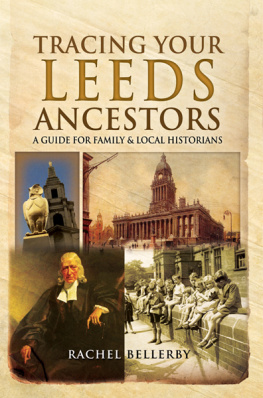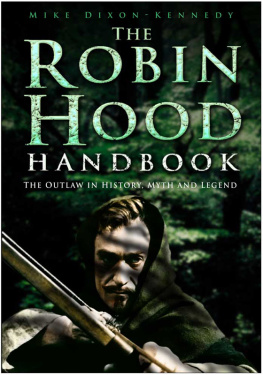Stephen Basdeo - The Life and legend of a rebel leader: Wat Tyler
Here you can read online Stephen Basdeo - The Life and legend of a rebel leader: Wat Tyler full text of the book (entire story) in english for free. Download pdf and epub, get meaning, cover and reviews about this ebook. year: 2018, publisher: Pen and Sword, genre: Art. Description of the work, (preface) as well as reviews are available. Best literature library LitArk.com created for fans of good reading and offers a wide selection of genres:
Romance novel
Science fiction
Adventure
Detective
Science
History
Home and family
Prose
Art
Politics
Computer
Non-fiction
Religion
Business
Children
Humor
Choose a favorite category and find really read worthwhile books. Enjoy immersion in the world of imagination, feel the emotions of the characters or learn something new for yourself, make an fascinating discovery.
- Book:The Life and legend of a rebel leader: Wat Tyler
- Author:
- Publisher:Pen and Sword
- Genre:
- Year:2018
- Rating:3 / 5
- Favourites:Add to favourites
- Your mark:
- 60
- 1
- 2
- 3
- 4
- 5
The Life and legend of a rebel leader: Wat Tyler: summary, description and annotation
We offer to read an annotation, description, summary or preface (depends on what the author of the book "The Life and legend of a rebel leader: Wat Tyler" wrote himself). If you haven't found the necessary information about the book — write in the comments, we will try to find it.
Stephen Basdeo: author's other books
Who wrote The Life and legend of a rebel leader: Wat Tyler? Find out the surname, the name of the author of the book and a list of all author's works by series.
The Life and legend of a rebel leader: Wat Tyler — read online for free the complete book (whole text) full work
Below is the text of the book, divided by pages. System saving the place of the last page read, allows you to conveniently read the book "The Life and legend of a rebel leader: Wat Tyler" online for free, without having to search again every time where you left off. Put a bookmark, and you can go to the page where you finished reading at any time.
Font size:
Interval:
Bookmark:

The Life and Legend of a Rebel Leader: Wat Tyler
Sandra Reston
She pushed me to study history, and without her efforts this book would not have been published.
* * *
Now to the purpose I am He,
Who not for fame competed,
But would have seen my country free
And have her foes defeated:
Mine was a deed the good desired,
The shackled chain was round us;
We rose at once like men inspired,
And burst the links that bound us!
Charles Cole, The Spirit of Wat Tyler (1848)
Stephen Basdeo

First published in Great Britain in 2018 by
PEN AND SWORD HISTORY
an imprint of
Pen and Sword Books Ltd
47 Church Street
Barnsley
South Yorkshire S70 2AS
Copyright Stephen Basdeo, 2018
ISBN 978 1 52670 979 0
eISBN 978 1 52670 981 3
Mobi ISBN 978 1 52670 980 6
The right of Stephen Basdeo to be identified as the author of this work has been asserted by him in accordance with the Copyright, Designs and Patents Act 1988.
A CIP record for this book is available from the British Library All rights reserved. No part of this book may be reproduced or transmitted in any form or by any means, electronic or mechanical including photocopying, recording or by any information storage and retrieval system, without permission from the Publisher in writing.
Pen & Sword Books Ltd incorporates the imprints of Pen & Sword Archaeology, Atlas, Aviation, Battleground, Discovery, Family History, History, Maritime, Military, Naval, Politics, Railways, Select, Social History, Transport, True Crime, Claymore Press, Frontline Books, Leo Cooper, Praetorian Press, Remember When, Seaforth Publishing and Wharncliffe.
For a complete list of Pen and Sword titles please contact
Pen and Sword Books Limited
47 Church Street, Barnsley, South Yorkshire, S70 2AS, England
E-mail:
Website: www.pen-and-sword.co.uk
John Ball preaching to the commons at Blackheath, from Froissarts Chronicles
Great Seal of Richard II
Richard II in his barge meeting the rebels, from Froissarts Chronicles
The murder of the archbishop, Simon Sudbury, from Froissarts Chronicles
The death of Wat Tyler, from Froissarts Chronicles
Portrait of Richard II
Portrait of John of Gaunt
Joan of Kent appealing to Wat Tyler for protection from the mob
Portrait of John Wycliffe
The surrender of Richard II to Henry Bolingbroke at Flint Castle
Pontefract Castle in the time of Richard II
Facsimile of the first chapter of the Gospel of John in Wycliffes New Testament
Portrait of Geoffrey Chaucer
Fourteenth-century illustration of a blacksmith
Richard II appeases the rebels on the death of Wat Tyler
The burning of St. Johns Monastery in Smthfield, c.1784
Wat Tyler killing the poll tax collector by J. Rigaud, 1798
The death of Wat Tyler by James Northcote, 1777
Frontispiece to Thomas Evans Old Ballads, Historical and Narrative (1777)
Joan of Kent by A. Penley, 1837
Portrait of Robert Southey (1774-1843)
Portrait of Pierce Egan the Younger (1814-1880)
Portrait of William Harrison Ainsworth (1805-1882)
Frontispiece to Pierce Egan the Youngers Wat Tyler; or, The Rebellion of 1381 (1841)
Wat Tyler addressing the rebels at Smithfield, from Pierce Egans Wat Tyler; or, the Rebellion of 1381 (1841)
Frontispiece to William Morriss A Dream of John Ball (1888)
The death of William Langland, as imagined in Florence Converses Long Will (1902)
I feel that I should point out, at the very beginning, that this book is not a book about medieval history. There is medieval history in this book, as this work covers the historical events of the so-called Peasants Revolt of 1381 in the first chapter. But what interests me in this work, rather, is the way that Wat Tyler and the events of the revolt have been reimagined and represented by various authors in subsequent ages. I am interested in his legend. That term is, indeed, the correct term by which we should describe the man, especially if we take it in the way that it is listed in The Oxford English Dictionary : an extremely famous or notorious person. Tylers actions during the revolt certainly made him famous, or notorious, according to those on the side of the establishment. His fame was then kept alive by artists and writers in successive ages. His name could inspire people, such as the Chartists, or it could horrify them. The present study, then, is a work of cultural history which provides a narrative overview of the life, and of the subsequent post-medieval legend of Wat Tyler, the leader of the rebellion, between 1381 and c.1900.
Furthermore, in examining the stories that were written about Wat Tyler in subsequent eras, it is not the intention here to judge whether these writers were historically accurate in their depiction of the rebellion. As we will see, later authors, especially during the early modern period, were rarely concerned with presenting a true picture of the past (assuming any writer, at any period of history, could ever achieve such a thing as historical accuracy). Instead, this book concerns itself with asking what the history of Wat Tyler meant to people who were writing about him hundreds of years after his death. Thus, questions such as the following will be answered: why did the visionary revolutionary thinker, Thomas Paine (1737-1809), invoke Tylers name in the eighteenth century? Why was he so important to the Chartists during the 1840s? Through studying how Wat Tyler has been represented throughout the ages, we can learn, not only about the medieval period, but also about the early modern period, and the eighteenth and nineteenth centuries.
The first chapter is a concise narrative of the Great Revolt of 1381, one of the most important events in English history. It is a time when people from relatively low stations in life became aware of their own power and importance. Many factors contributed to the outbreak of the revolt. One of them was disease, the Black Death which decimated the population of Europe in the mid-fourteenth century. As tragic as the events of the Black Death must have been for many people, the labouring class of medieval England could, as a result of the decimation of the population, demand more money for their work. The government sought to put a stop to this through the Statute of Labourers (1351), a measure which stoked resentment of the lower orders. Additionally, war with France was eating into the nations funds, and the people were hit with three poll taxes, in 1377, 1379, and 1380. The final poll tax was the straw that broke the camels back. Bearing a number of grievances, and fired by the preaching of John Ball, the radical priest, they marched on London to demand redress. They elected Wat Tyler as their leader, who some sources say was a veteran of the Hundred Years War. Wat Tylers personal motivations for joining in the rebellion are not known, indeed there is much that remains unknown about his life. One of the chronicles, written some time after the rebellion, says that a tax collector visited his home and demanded payment for his daughter. Tyler informed the tax collector that his daughter was underage, and that therefore he was not liable to pay a tax for her. Upon hearing this, the tax collector moved to search his daughter in an indecent manner, whereupon Tyler became enraged and, picking up his hammer, bashed the tax collectors brains out (this apocryphal story became accepted as a historical fact during the seventeenth, eighteenth, and nineteenth centuries, and features in several of the novels written about him in the latter period). The rebels demands were relatively modest: freedom from serfdom, freedom to buy and sell in the marketplace, and a pardon for all offences committed during the rising. Sadly, the peoples grievances would not be remedied at this point, and their leader, Tyler, was murdered by the Lord Mayor of London, William Walworth (d. 1385). It is not the intention here to add anything new to discussions about the historical revolt and its leader. Given that entire books have been written on the subject, hopefully readers will forgive the brevity with which the rising is dealt with in this chapter, it is intended as a preface to the examination of Wat Tyler in post-medieval literature.
Next pageFont size:
Interval:
Bookmark:
Similar books «The Life and legend of a rebel leader: Wat Tyler»
Look at similar books to The Life and legend of a rebel leader: Wat Tyler. We have selected literature similar in name and meaning in the hope of providing readers with more options to find new, interesting, not yet read works.
Discussion, reviews of the book The Life and legend of a rebel leader: Wat Tyler and just readers' own opinions. Leave your comments, write what you think about the work, its meaning or the main characters. Specify what exactly you liked and what you didn't like, and why you think so.












